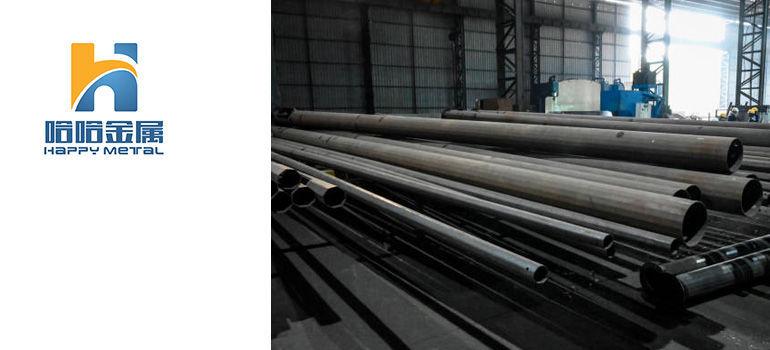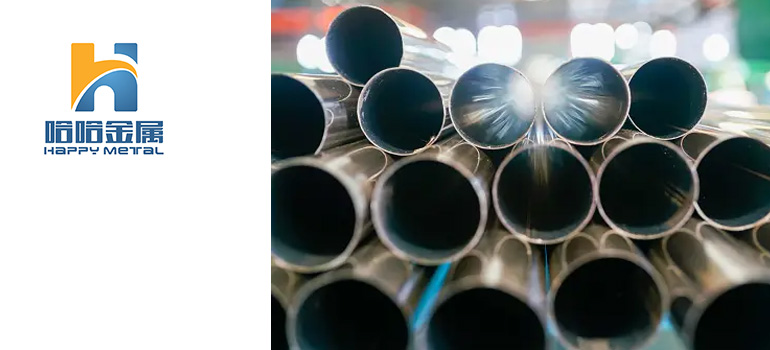Summary:
Exploring Different Types of Stainless Steel Pipes: Uses and Benefits
What Are Stainless Steel Pipes?
Types of Stainless Steel Pipes and Their Uses
Comparing Stainless Steel Pipe Types
Benefits of Using Stainless Steel Pipes
When we talk about stainless steel pipes, we’re discussing a versatile material that plays a crucial role across many industries. Stainless steel pipes come in various types, each with unique characteristics and applications. To give you a better understanding of these pipe types, let’s dive into their definitions, key features, and common materials and grades.
What Are Stainless Steel Pipes?
Stainless steel pipes are tubes made from stainless steel, renowned for their excellent resistance to corrosion and strength. These pipes are manufactured by forming stainless steel alloy into tubular shapes, which can then be used for transporting liquids, gases, and supporting structures. Due to their unique physical and chemical properties, stainless steel pipes are indispensable in modern industry and construction.
Key Characteristics of Stainless Steel Pipes
Stainless steel pipes are celebrated for their superior durability, corrosion resistance, and high-temperature tolerance. They can withstand most chemicals and environmental conditions, making them suitable for harsh environments. Another significant advantage is their aesthetic appeal and low maintenance. The smooth surface of stainless steel pipes makes them easy to clean, which is ideal for applications where appearance is important.
Common Materials and Grades
Stainless steel pipes come in various materials and grades. The most common grades include 304 and 316 stainless steel. Grade 304 is a general-purpose stainless steel that is suitable for most environments, while Grade 316 contains additional molybdenum, enhancing its corrosion resistance, particularly in chloride environments. For instance, 316 stainless steel is often used in marine environments and chemical processing industries. Understanding these materials and grades can help you select the most appropriate pipe type for your needs, ensuring optimal performance and longevity in specific applications.
By understanding these stainless steel pipe types, you can make more informed decisions when selecting the right product for your projects, ensuring they deliver the best performance for your needs. Whether you’re involved in construction, industrial production, or home renovation, having a solid grasp of these pipes is crucial.
Types of Stainless Steel Pipes and Their Uses

Stainless steel pipes are essential in various industries due to their durability, strength, and resistance to corrosion. Understanding the different types of stainless steel pipes and their specific uses can help you choose the right pipe for your project. Here’s a breakdown of the most common types and their applications:
Seamless Stainless Steel Pipes
Seamless stainless steel pipes are manufactured without welding or joints, making them highly resistant to pressure and stress. They are created through extrusion, where a solid billet of stainless steel is heated and forced through a die to create a hollow tube.
Applications:
Oil and Gas Industry: Ideal for transporting oil and gas due to their ability to handle high pressure.
Construction: Used in structural applications where strength and durability are crucial.
Aerospace: Suitable for critical applications where high performance and reliability are required.
Welded Stainless Steel Pipes
Welded stainless steel pipes are made by welding together strips of stainless steel. The welding process involves heating the edges of the strips and pressing them together to form a tube.
Applications:
Water Supply Systems: Commonly used in water and wastewater treatment facilities.
Chemical Processing: Suitable for handling various chemicals due to their resistance to corrosion.
HVAC Systems: Often used in heating, ventilation, and air conditioning systems for their flexibility and cost-effectiveness.
Corrugated Stainless Steel Pipes
Corrugated stainless steel pipes feature a wavy, flexible structure that allows them to bend and adapt to various configurations. They are manufactured by forming stainless steel into a corrugated shape.
Applications:
Plumbing: Used for flexible connections and to accommodate vibrations and movements in plumbing systems.
Gas Lines: Ideal for residential and commercial gas lines due to their flexibility and durability.
HVAC Systems: Employed in ventilation systems where flexibility is required for installation.
Square and Rectangular Stainless Steel Pipes
These pipes are produced in shapes other than the standard round tube, such as square or rectangular cross-sections. They are often used for aesthetic and structural purposes.
Applications:
Architectural Structures: Used in modern buildings and structures for aesthetic appeal and strength.
Furniture and Fixtures: Common in the design of furniture, railings, and other decorative elements.
Industrial Supports: Employed in various industrial settings for structural support and framework.
Sanitary Stainless Steel Pipes
Sanitary stainless steel pipes are designed to meet stringent hygiene standards. They are manufactured with a smooth surface and are used in industries where cleanliness is paramount.
Applications:
Food and Beverage Industry: Used in food processing and beverage production facilities to ensure sanitary conditions.
Pharmaceutical Industry: Employed in pharmaceutical manufacturing to prevent contamination.
Medical Equipment: Utilized in medical devices and equipment where hygiene is critical.
Comparing Stainless Steel Pipe Types
When selecting stainless steel pipes for your projects, understanding the differences between various types is crucial for ensuring you choose the best option for your needs. Here’s a detailed comparison of the most common stainless steel pipe types: seamless, welded, corrugated, square/rectangular, and sanitary.
Seamless vs. Welded Pipes: Key Differences
Seamless Pipes:
Manufacturing Process: Produced by extruding a solid billet of stainless steel, which is heated and forced through a die to form a hollow tube without any seams or welds.
Strength and Durability: Generally stronger and more resistant to pressure and stress due to the absence of welds. Ideal for high-pressure applications.
Cost: Typically more expensive due to the complex manufacturing process.
Applications: Commonly used in high-pressure environments such as the oil and gas industry, aerospace, and heavy-duty construction.
Welded Pipes:
Manufacturing Process: Made by welding together strips of stainless steel to form a tube. The welds are created by heating the edges and pressing them together.
Strength and Durability: Can be slightly less robust than seamless pipes due to the presence of welds, but still suitable for many applications.
Cost: More cost-effective compared to seamless pipes due to simpler manufacturing.
Applications: Often used in water supply systems, chemical processing, and HVAC systems where cost-efficiency is a priority.
Choosing the Right Pipe for Your Needs
Seamless Pipes:
Best For: High-pressure and high-stress applications where strength and reliability are paramount.
Considerations: Choose seamless pipes for critical systems where joint integrity and performance are essential.
Welded Pipes:
Best For: Applications where cost is a key consideration, and the pipe will not be subjected to extreme pressure or stress.
Considerations: Ideal for projects where the flexibility of the pipe’s design and installation process is valued.
Cost Considerations and Performance
Seamless Pipes:
Cost: Higher due to the complex extrusion process and material handling.
Performance: Superior in high-pressure and high-stress applications, with better overall strength and durability.
Welded Pipes:
Cost: Lower, making them a more budget-friendly option for many applications.
Performance: Adequate for moderate pressure and stress conditions, with a trade-off in terms of strength compared to seamless pipes.
Corrugated vs. Rigid Pipes: Flexibility and Applications
Corrugated Pipes:
Design: Feature a flexible, wavy structure that allows them to bend and conform to various shapes and angles.
Flexibility: Highly flexible and can absorb vibrations and movements, making them ideal for dynamic applications.
Applications: Commonly used in plumbing for flexible connections, gas lines, and HVAC systems where adaptability is needed.
Rigid Pipes (Seamless and Welded):
Design: Feature a solid, straight structure without the flexibility found in corrugated pipes.
Flexibility: Less flexible but generally more suitable for static applications where the pipe does not need to bend.
Applications: Suitable for structural supports, high-pressure systems, and other static applications requiring rigidity and strength.
Sanitary Pipes vs. General Purpose Pipes: Hygiene and Applications
Sanitary Pipes:
Design: Manufactured with a smooth surface and meet stringent hygiene standards.
Hygiene: Designed to prevent contamination and are easy to clean, ensuring high sanitary conditions.
Applications: Used in food processing, pharmaceutical manufacturing, and medical equipment where cleanliness is critical.
General Purpose Pipes (Seamless, Welded):
Design: Typically not specifically engineered for sanitary conditions but are robust and versatile.
Hygiene: May not meet the same stringent hygiene standards as sanitary pipes, but suitable for many industrial applications.
Applications: Used in a wide range of industries including construction, water supply, and chemical processing.
Benefits of Using Stainless Steel Pipes
Stainless steel pipes are highly regarded for their durability and versatility. Here’s a comprehensive overview of the benefits they offer:
Durability and Corrosion Resistance
Durability: Stainless steel pipes are known for their strength and resistance to wear and tear. They maintain their structural integrity under harsh conditions, making them ideal for high-stress and high-impact applications.
Corrosion Resistance: One of the primary advantages of stainless steel is its excellent resistance to rust and corrosion. This is due to the chromium content in the alloy, which forms a protective oxide layer on the surface. This property is particularly beneficial in environments exposed to moisture, chemicals, and harsh weather conditions.
Aesthetic and Maintenance Advantages
Aesthetic Appeal: Stainless steel pipes have a sleek, shiny surface that enhances the visual appeal of installations. Their modern and clean look makes them suitable for visible applications in architecture and interior design.
Low Maintenance: The smooth surface of stainless steel pipes is easy to clean and maintain. They require minimal upkeep compared to other materials, as they do not need painting or frequent replacement. This characteristic makes them a cost-effective choice over time.
Temperature and Pressure Resistance
Temperature Tolerance: Stainless steel pipes can withstand extreme temperatures, both high and low. They perform well in environments with fluctuating temperatures, such as in industrial processes and refrigeration systems.
Pressure Handling: These pipes are designed to handle high-pressure applications efficiently. Whether in oil and gas pipelines or high-pressure water systems, stainless steel pipes offer reliable performance under significant pressure.
Environmental and Economic Benefits
Environmental Impact: Stainless steel is highly recyclable, making it an environmentally friendly choice. Its long lifespan reduces the need for frequent replacements, minimizing waste and conserving resources.
Cost-Effectiveness: Although the initial cost of stainless steel pipes can be higher than other materials, their longevity and low maintenance requirements result in lower overall lifetime costs. This makes them a cost-effective option in the long run.
Versatility and Application Range
Versatility: Stainless steel pipes are versatile and can be used in a wide range of applications, from residential plumbing to complex industrial systems. They are suitable for transporting liquids, gases, and even solids in various industries.
Applications: These pipes are used in diverse fields including construction, automotive, aerospace, food and beverage processing, pharmaceuticals, and more. Their adaptability to different environments and purposes highlights their broad utility.
Strength and Reliability
High Strength: Stainless steel pipes offer exceptional tensile strength and resistance to deformation. This makes them reliable for structural applications, such as supports and frameworks in construction.
Dependability: The consistent performance of stainless steel pipes under demanding conditions ensures reliability. They are less likely to fail or require repairs, providing peace of mind for critical systems.
Hygienic Properties
Sanitary Applications: Stainless steel pipes are often used in sanitary and hygienic applications due to their non-porous surface, which prevents bacterial growth and contamination. This is particularly important in industries such as food and beverage, pharmaceuticals, and healthcare.
Maybe you are interested in the following: Top 3 Stainless Steel Pipe Material Types and How They Impact Performance




